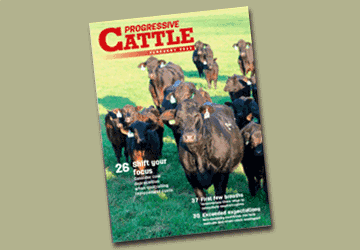Manageable steps to make progress with succession planning this year
Succession planning is a marathon – not a sprint. Families should identify their goals, create a plan and establish a tempo that works for them in order to sustain the momentum needed to reach the finish line.
The beginning of the year is a time to reflect on the past and set our intention for the future. As we flip the calendar to the new year, we get a fresh start and feel energized to set goals for the year. But did you know that only 9% of resolutions that are made on Jan. 1 are completed? In fact, one out of four people abandon their resolutions in the first week.
 Many families make the mistake of jumping into succession planning without a plan. They meet with their professionals, have conversations with family and may even get so far as to begin transitioning ownership of assets, but somewhere along the way, momentum gets lost and the plan stalls. Once these activities stall, many families find it very difficult to get started again.
Many families make the mistake of jumping into succession planning without a plan. They meet with their professionals, have conversations with family and may even get so far as to begin transitioning ownership of assets, but somewhere along the way, momentum gets lost and the plan stalls. Once these activities stall, many families find it very difficult to get started again.
If succession planning is on your to-do list this year, follow these steps to ensure that you cross the finish line with the rest of the 9%.
Identify your starting point
A comprehensive transition plan has five components:
- Business plan
- Continuity plan
- Succession plan
- Personal financial plan
- Estate plan
To establish a starting point, a careful (and honest) evaluation of where you are in these five areas is critical. The succession plan has three areas to consider:
- Management transition
- Ownership transition
- Governance
Assessing your successors and heirs to determine where they are starting from is helpful to determine a plan for preparing them to take over. Developing a plan for the transition of management should be separate from your plan for the transition of ownership.
Create a timeline
If you feel an aversion to the word “retirement,” like most farmers and ranchers do, you may feel that setting a timeline is challenging. Rather than declaring a date when you will turn in the keys to your truck, create a plan that recognizes the value a transitioning owner can bring to the operation as you age. Consider what you are physically and mentally able to contribute as well as what the next generation is ready to take on. Friction and disharmony will occur if decision-making authority is not transitioned as the owner generation begins to spend less time in day-to-day activities.
Determine your gaps
Once you have a clear picture of where you are starting, you can evaluate the gaps between where you are and where you want to be. You will want to consider the following: How will the operation need to be positioned to withstand transition from a financial, continuity and expansion or diversification perspective? What skills do your successors need to learn or master? Are there interpersonal dynamics that need to be addressed? Is there conflict or disharmony between your on-farm and off-farm family members? If gaps aren’t addressed, succession plans are often created that “work around” tension points, which will expose the family and operation to bigger challenges in the future. A word of caution: Do not rush to transition the ownership of assets if you have not addressed interpersonal challenges between your heirs.
Set annual goals
Succession planning takes focus. Once you have created a timeline and determined your gaps, you are ready to set annual goals. Be conservative. Executing a comprehensive succession plan takes years – not days. Clearly state where you want to be at the end of the year and then identify the steps it will take to get there. Break your annual goals into smaller goals that can be accomplished in 90 days. By doing this, you will create clear visibility on your tasks and allow you to plan for more to be done at the times of the year when there is less physical work to be done. For instance, you may have very little time during calving but more time in the summer.
Additionally, take time to evaluate the team of professionals you will need to help you accomplish your goals. If you are not already working with a team of professionals who are experts in succession planning, finding them should be a top priority.
Succession planning is a marathon – not a sprint. Identify your goals, create your plan and establish a tempo that allows you to integrate the steps into your routine rather than make it a set of tasks that are in addition to your already very full plate.
Read this article online in Progressive Cattle.
Learn more about The DIRTT Project.
Illustration by Kristen Phillips.

